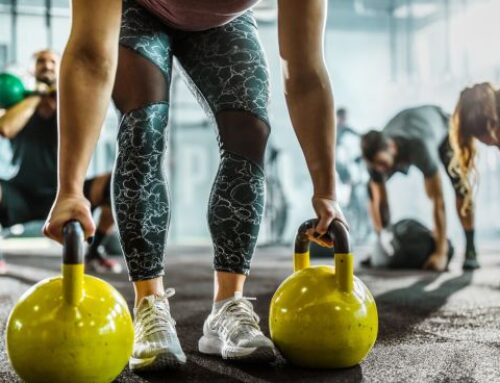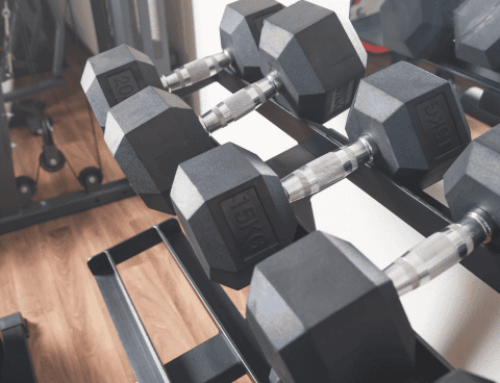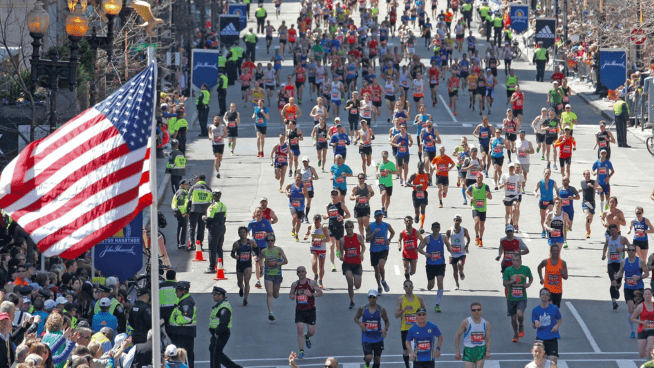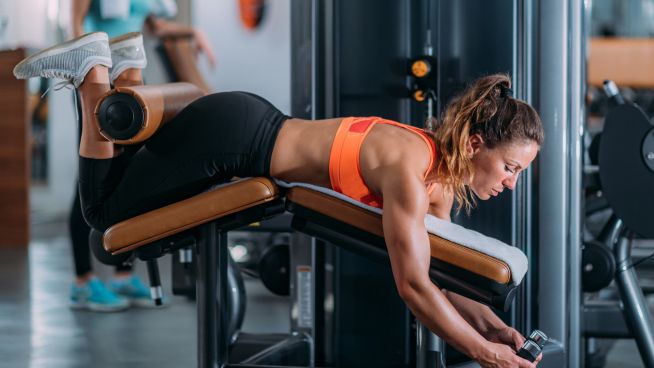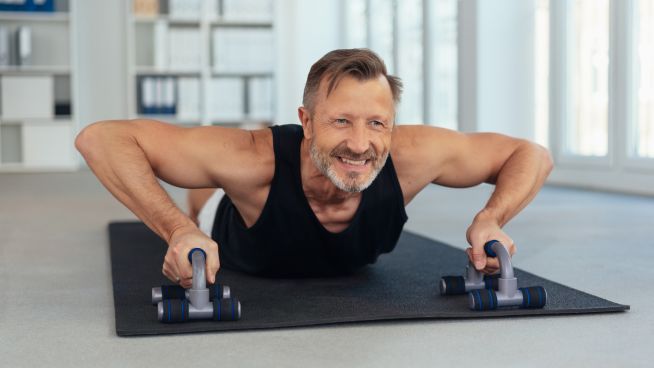How to Get Stronger Shoulders by Training Your Back Muscles
When people think about building stronger shoulders, they typically focus on exercises that target the deltoids. However, training your back muscles can be just as crucial, if not more so, for developing powerful and stable shoulders.
The back muscles—such as the trapezius, rhomboids, and latissimus dorsi—provide essential support to the shoulder joint and contribute to overall shoulder strength, stability, and injury prevention.
The Relationship Between Back Muscles and Shoulder Strength
Understanding the connection between back muscles and shoulder strength is essential for optimizing your workout. The back muscles work in tandem with the shoulder muscles to stabilize and move the shoulder joint.
Here’s how key back muscles contribute to shoulder strength:
- Trapezius: The upper part of the trapezius muscle supports the scapula (shoulder blade), helping with shoulder elevation and stability. It plays a significant role in preventing slumping shoulders and supports movements like shoulder presses and overhead lifts.
- Rhomboids: Rhomboids are the muscles located between the shoulder blades. They help retract the scapula and maintain proper shoulder posture. Strong rhomboids reduce the risk of shoulder impingement and enhance shoulder mobility.
- Latissimus Dorsi (Lats): The lats assist with shoulder extension and internal rotation. Strengthening them improves your ability to pull and lift heavy loads, enhancing shoulder functionality.
- Rotator Cuff Muscles: While not part of the back, the rotator cuff works closely with the back muscles to stabilize the shoulder joint during various movements.
Neglecting back muscle development can lead to muscle imbalances, poor posture, and shoulder injuries, highlighting the importance of training your shoulders and back for optimal performance.
Benefits of Training Back Muscles for Shoulder Strength
Training your back muscles is beneficial for sculpting a balanced physique and offers various advantages for shoulder strength and overall upper-body functionality. Here are some key benefits:
- Improved Shoulder Stability: Strong back muscles enhance the stability of the shoulder joint by supporting the scapula. This is particularly important during overhead movements, reducing the risk of dislocation and injury.
- Enhanced Shoulder Mobility: A well-developed back helps improve your shoulder’s range of motion. The rhomboids and trapezius muscles contribute to better shoulder blade mobility, which translates into smoother, more efficient shoulder movements during pressing and pulling exercises.
- Better Posture: Strengthening your back muscles helps maintain proper posture, keeping the shoulders aligned and reducing the tendency for them to roll forward, which can lead to shoulder strain or injury. This can also make your shoulders appear broader and more muscular.
- Injury Prevention: Balanced development of the back and shoulder muscles prevents muscle imbalances that can contribute to shoulder impingement, rotator cuff issues, and other injuries. A strong back helps support the shoulder during intense lifts, minimizing the risk of overuse injuries.
- Improved Athletic Performance: Whether you’re an athlete, weightlifter, or casual gym-goer, a strong back is crucial for enhancing your overall upper body strength, translating into more powerful shoulder movements in sports and daily activities.
Effective Back Exercises for Shoulder Strength
To achieve stronger shoulders by training your back, you must incorporate compound movements and isolation exercises targeting the key back muscles. Below are some highly effective back exercises that contribute to shoulder development.
1. Pull-Ups or Lat Pulldowns
Muscles Targeted: Latissimus dorsi, trapezius, rhomboids
Why It Helps: Pull-ups are among the best exercises for building upper back strength, contributing to shoulder mobility and stability. They engage the lats and help with shoulder extension, supporting shoulder movement in exercises like overhead presses.
How to Do It:
2. Barbell Rows
Muscles Targeted: Rhomboids, trapezius, latissimus dorsi
Why It Helps: Barbell rows strengthen the entire upper back, essential for stabilizing the shoulder blades. This improves your shoulder posture and supports shoulder movements.
How to Do It:
3. Face Pulls
Muscles Targeted: Rear deltoids, rhomboids, trapezius
Why It Helps: Face pulls specifically target the rear deltoids and upper back muscles, crucial for shoulder stability. Stability is essential to reduce the risk of injury.
How to Do It:
4. Dumbbell Reverse Flys
Muscles Targeted: Rear deltoids, rhomboids
Why It Helps: Reverse flys emphasize the rear deltoids and upper back, helping to counteract forward shoulder rounding and improve shoulder alignment.
How to Do It:
5. T-Bar Rows
Muscles Targeted: Middle back, traps, lats
Why It Helps: T-bar rows build thickness in the upper and middle back, contributing to stronger, more stable shoulders, especially during pushing and overhead movements.
How to Do It:
6. Shrugs
Muscles Targeted: Trapezius
Why It Helps: Shrugs isolate the upper trapezius muscles, critical in shoulder elevation and stabilization.
How to Do It:
Designing a Shoulder-Back Workout Routine
To maximize shoulder strength through back training, consider incorporating the following structure into your workout routine:
- Day 1: Focus on compound back exercises like pull-ups, barbell rows, and T-bar rows. Pair them with direct shoulder work like overhead presses.
- Day 2: Emphasize isolation exercises such as face pulls, reverse flys, and shrugs to target smaller back and shoulder stabilizers.
- Reps and Sets: Perform 3–5 sets of 5–12 reps for each exercise, adjusting the volume based on your fitness level and goals.
Incorporate this plan into your training schedule 2–3 times weekly for optimal results.
Building more muscular shoulders requires more than just focusing on the deltoid muscles. By incorporating back-focused exercises into your routine, you can improve shoulder stability, mobility, and overall strength while reducing the risk of injury.
Strengthening key back muscles like the trapezius, rhomboids, and latissimus dorsi enhances shoulder performance and strength and improves posture and a balanced physique. Also, pulling movements produce greater pressing power. For instance, doing lat pulldowns for the first set primes the shoulder press for the next when agonist / antagonist training.
By following the workout strategies and exercises outlined above, you’ll be on your way to developing powerful, resilient shoulders that support your fitness goals and daily activities.
Check out my book Eat to Win for weeks of nutritional plans for breakfast, lunch and dinner. And Blended Bliss if you love smoothies!
Check out my INSTANT STRENGTH book for total strength, speed, and power programs.
To maximize stability, mobility, and flexibility, check out my book, THE BALANCED BODY.
To see great exercises, methods, and techniques videos, subscribe to my YouTube channel, BALANCED BODY.
RECOMMENDED FOR YOU
MOST POPULAR
How to Get Stronger Shoulders by Training Your Back Muscles
When people think about building stronger shoulders, they typically focus on exercises that target the deltoids. However, training your back muscles can be just as crucial, if not more so, for developing powerful and stable shoulders.
The back muscles—such as the trapezius, rhomboids, and latissimus dorsi—provide essential support to the shoulder joint and contribute to overall shoulder strength, stability, and injury prevention.
The Relationship Between Back Muscles and Shoulder Strength
Understanding the connection between back muscles and shoulder strength is essential for optimizing your workout. The back muscles work in tandem with the shoulder muscles to stabilize and move the shoulder joint.
Here’s how key back muscles contribute to shoulder strength:
- Trapezius: The upper part of the trapezius muscle supports the scapula (shoulder blade), helping with shoulder elevation and stability. It plays a significant role in preventing slumping shoulders and supports movements like shoulder presses and overhead lifts.
- Rhomboids: Rhomboids are the muscles located between the shoulder blades. They help retract the scapula and maintain proper shoulder posture. Strong rhomboids reduce the risk of shoulder impingement and enhance shoulder mobility.
- Latissimus Dorsi (Lats): The lats assist with shoulder extension and internal rotation. Strengthening them improves your ability to pull and lift heavy loads, enhancing shoulder functionality.
- Rotator Cuff Muscles: While not part of the back, the rotator cuff works closely with the back muscles to stabilize the shoulder joint during various movements.
Neglecting back muscle development can lead to muscle imbalances, poor posture, and shoulder injuries, highlighting the importance of training your shoulders and back for optimal performance.
Benefits of Training Back Muscles for Shoulder Strength
Training your back muscles is beneficial for sculpting a balanced physique and offers various advantages for shoulder strength and overall upper-body functionality. Here are some key benefits:
- Improved Shoulder Stability: Strong back muscles enhance the stability of the shoulder joint by supporting the scapula. This is particularly important during overhead movements, reducing the risk of dislocation and injury.
- Enhanced Shoulder Mobility: A well-developed back helps improve your shoulder’s range of motion. The rhomboids and trapezius muscles contribute to better shoulder blade mobility, which translates into smoother, more efficient shoulder movements during pressing and pulling exercises.
- Better Posture: Strengthening your back muscles helps maintain proper posture, keeping the shoulders aligned and reducing the tendency for them to roll forward, which can lead to shoulder strain or injury. This can also make your shoulders appear broader and more muscular.
- Injury Prevention: Balanced development of the back and shoulder muscles prevents muscle imbalances that can contribute to shoulder impingement, rotator cuff issues, and other injuries. A strong back helps support the shoulder during intense lifts, minimizing the risk of overuse injuries.
- Improved Athletic Performance: Whether you’re an athlete, weightlifter, or casual gym-goer, a strong back is crucial for enhancing your overall upper body strength, translating into more powerful shoulder movements in sports and daily activities.
Effective Back Exercises for Shoulder Strength
To achieve stronger shoulders by training your back, you must incorporate compound movements and isolation exercises targeting the key back muscles. Below are some highly effective back exercises that contribute to shoulder development.
1. Pull-Ups or Lat Pulldowns
Muscles Targeted: Latissimus dorsi, trapezius, rhomboids
Why It Helps: Pull-ups are among the best exercises for building upper back strength, contributing to shoulder mobility and stability. They engage the lats and help with shoulder extension, supporting shoulder movement in exercises like overhead presses.
How to Do It:
2. Barbell Rows
Muscles Targeted: Rhomboids, trapezius, latissimus dorsi
Why It Helps: Barbell rows strengthen the entire upper back, essential for stabilizing the shoulder blades. This improves your shoulder posture and supports shoulder movements.
How to Do It:
3. Face Pulls
Muscles Targeted: Rear deltoids, rhomboids, trapezius
Why It Helps: Face pulls specifically target the rear deltoids and upper back muscles, crucial for shoulder stability. Stability is essential to reduce the risk of injury.
How to Do It:
4. Dumbbell Reverse Flys
Muscles Targeted: Rear deltoids, rhomboids
Why It Helps: Reverse flys emphasize the rear deltoids and upper back, helping to counteract forward shoulder rounding and improve shoulder alignment.
How to Do It:
5. T-Bar Rows
Muscles Targeted: Middle back, traps, lats
Why It Helps: T-bar rows build thickness in the upper and middle back, contributing to stronger, more stable shoulders, especially during pushing and overhead movements.
How to Do It:
6. Shrugs
Muscles Targeted: Trapezius
Why It Helps: Shrugs isolate the upper trapezius muscles, critical in shoulder elevation and stabilization.
How to Do It:
Designing a Shoulder-Back Workout Routine
To maximize shoulder strength through back training, consider incorporating the following structure into your workout routine:
- Day 1: Focus on compound back exercises like pull-ups, barbell rows, and T-bar rows. Pair them with direct shoulder work like overhead presses.
- Day 2: Emphasize isolation exercises such as face pulls, reverse flys, and shrugs to target smaller back and shoulder stabilizers.
- Reps and Sets: Perform 3–5 sets of 5–12 reps for each exercise, adjusting the volume based on your fitness level and goals.
Incorporate this plan into your training schedule 2–3 times weekly for optimal results.
Building more muscular shoulders requires more than just focusing on the deltoid muscles. By incorporating back-focused exercises into your routine, you can improve shoulder stability, mobility, and overall strength while reducing the risk of injury.
Strengthening key back muscles like the trapezius, rhomboids, and latissimus dorsi enhances shoulder performance and strength and improves posture and a balanced physique. Also, pulling movements produce greater pressing power. For instance, doing lat pulldowns for the first set primes the shoulder press for the next when agonist / antagonist training.
By following the workout strategies and exercises outlined above, you’ll be on your way to developing powerful, resilient shoulders that support your fitness goals and daily activities.
Check out my book Eat to Win for weeks of nutritional plans for breakfast, lunch and dinner. And Blended Bliss if you love smoothies!
Check out my INSTANT STRENGTH book for total strength, speed, and power programs.
To maximize stability, mobility, and flexibility, check out my book, THE BALANCED BODY.
To see great exercises, methods, and techniques videos, subscribe to my YouTube channel, BALANCED BODY.


